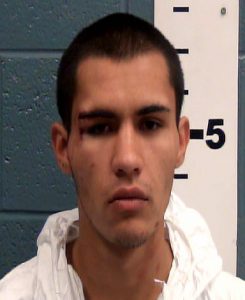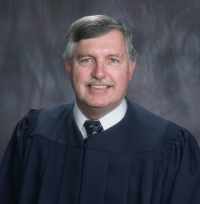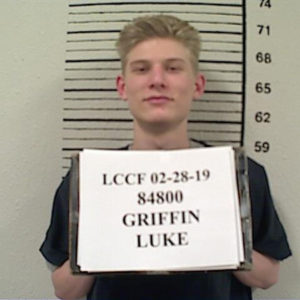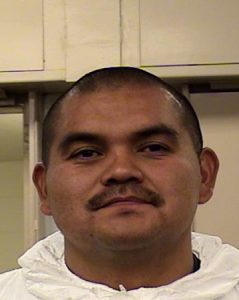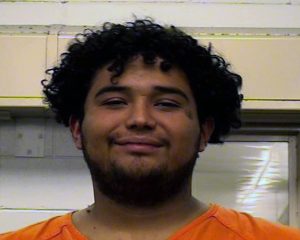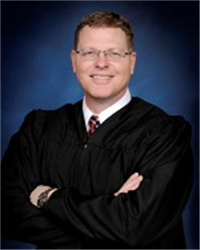- Suspect: Isaias Lobato-Rodriguez
- Victim: Connie Lopez, 57
- Date of incident: March 17, 2017
- Charges: First-degree murder
- Status: Appeal pending; Guilty verdict, second-degree murder; lesser included offense
- Sentence: 15 years (maximum)
- Location: Mile marker 48 on Highway 9 near Hachita, Grant County
- Agency: State Police
- Magistrate case number: M-19-FR-201700086
- District case number: D-608-CR-2017-00069
- Appeals court case number: A-1-CA-39409
- Judicial district: Sixth Judicial District
- District Judge: Jarod Hofacket
- Prosecutor: Matthew Bradburn
- Prosecuting agency: Sixth Judicial District Attorney’s Office
- Defense attorney: George Harrison
Summary
On March 17, 2017, Isaias Lobato-Rodriguez, of Florida, allegedly tied a belt around Connie Lopez’s neck, strangling her in the front seat of her rented mini-van, two miles east of Hachita in Grant County.
He allegedly told two Border Patrol agents, one of whom found Lopez’s body, that she was going to kill him and his family and that he was with other people in a berm in the desert. The agents could find neither footprints nor signs of anyone else. Based on evidence at the scene, it appeared the two had been traveling west from Florida.
On April 7, a preliminary hearing was held. The judge ordered Lobato-Rodriguez, who declared to the agents that he is in the country illegally, be bound over on a charge of first-degree murder.
On April 19, 2017, prosecutors filed a criminal information in District Court charging him with first-degree murder. On Aug. 20, 2020, a jury found him guilty of second-degree murder following a four-day trial and one hour of jury deliberations.
On Nov. 2, 2020, Judge Jarod Hofacket sentenced Lobato-Rodriguez to the maximum for second-degree murder: 15 years. He gave him credit for time already served in jail while awaiting a trial, 3 years, 7 months and 17 days, bringing down the total amount of time he still has to serve to 11 years, 4 months and 14 days.
He is appealing the verdict.
The incident
Border Patrol Agent John Enriquez was driving to Hachita to get acquainted with the area because he had just transferred over, March 17, 2017. On his drive, two miles east of Hachita, he saw a grey Chrysler mini-van parked on the side of the road. He kept on driving.
At 4 p.m., he headed back the way he came. This time, the mini-van’s front door was open and a person was slouched in the driver’s seat, State Police Agent Moises Mascorro wrote in a statement of probable cause for Isaias Lobato-Rodriguez’s arrest.
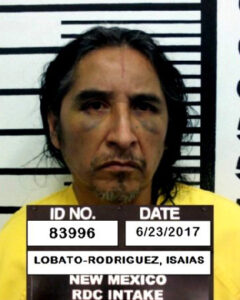
He turned around, parked, and approached the vehicle, Mascorro wrote, referring to his conversation with Enriquez.
“As got close to the driver, he noticed it was a female with a belt around her neck,” Mascorro wrote. “She was deceased.”
The woman would later be identified as Connie Lopez, of Lake Placid, Fla., with a hotel reservation in El Paso, Texas.
While he was calling in the situation to his dispatchers, he was allegedly approached by Lobato-Rodriguez, who allegedly told Enriquez he is an illegal alien.
Shortly thereafter, Border Patrol Agent Adrian Garcia arrived to help Enriquez.
“Mr. Rodriguez mumbled to them, stating he killed her because she was going to kill his family,” Mascorro wrote. “He also stated there were other people traveling with him in a white pick-up. and some were hiding in the berm in the desert.”
Garcia told Mascorro much the same, although he described the mumbling as being “really fast.” He also said that Lobato-Rodriguez allegedly said he killed Lopez because she was going to kill him and his family, not just his family.
After he mumbled about her going to kill him, Garcia handcuffed him and read him his Miranda rights.
“Agent Garcia went and looked for tracks but was only able to locate Mr. Rodriguez’s tracks,” Mascorro wrote.
Mascorro found documents in the vehicle belonging to Lobato-Rodriguez as well and they also indicated he lived in Florida, like Lopez. Mascorro did not specify if Lopez and Lobato-Rodriguez were in a relationship or if they were traveling together.
“Documents inside the vehicle showed Connie Lopez was traveling from Florida on March 15, 2017 heading westbound,” Mascorro wrote.
After the agents took Lobato-Rodriguez to the State Police Office in Deming, Mascorro tried to interview him, but Lobato-Rodriguez said he wanted an attorney present. This ended the conversation because he had asserted his Miranda rights.
According to Lobato-Rodriguez’s trial testimony, Lopez was driving him to his home in Mexico.
Probable cause - Isaias Lobato-RodriguezAutopsy report
According to the autopsy report, Lopez had a leather belt tied around her neck when her body came in.
Pathologist Veena Singh and Forensic Pathology Fellow Rebecca Asch-Kendrick wrote in the report that there was other evidence of strangulation as well.
Missed trial dates
On April 7, 2017, a preliminary hearing in the case was held and Lobato-Rodriguez was ordered bound over to district court on a charge of first-degree murder.
On April 19, 2017, prosecutors filed a criminal information in district court charging Lobato-Rodriguez with first-degree murder.
On June 14, 2018, Lobato-Rodriguez’s attorney at the time, George Harrison, filed a motion to suppress his statements. In a 13-page order, District Court Judge Jarod Hofacket bemoaned how late the motion to suppress was filed but ultimately concluded that all interrogations of Lobato-Rodriguez were legal.
Harrison filed a second motion to suppress on Aug. 13, 2018, again focusing on the interrogation by the two border patrol agents. On Aug. 21, 2018, Hofacket again denied the motion to suppress and wrote that Harrison had not presented new evidence or new circumstances.
On Aug. 22, 2018, Harrison filed a motion to withdraw because he got a job working for the state of New Mexico.
On Oct. 3, 2019, Lobato-Rodriguez’s new attorney, Chico Gallegos, filed a motion to continue the jury trial, set for Oct. 7, 2019. He wrote that it “became clear” that he needed to hire an expert witness to translate what was said in English, and in Spanish, for the various communications between border patrol agents and Lobato-Rodriguez.
Plea hearing/trial date
On Dec. 4, 2019, a jury trial was set for August 17 through 21, 2020, and a pre-trial conference for July 20, 2020, at the district court in Deming.
On Jan. 21, 2020, the judge set a plea hearing and pre-trial conference for July 27, 2020, at the district courthouse in Silver City.
On June 5, 2020, the court clerk entered an amended notice of a pre-trial conference and plea hearing set for 1 p.m., July 27, 2020, done via video conference. The hearing is set for 15 minutes.
It is not clear from the court documents and filings if Lobato-Rodriguez plans to plead guilty or if it is a perfunctory hearing before the trial. The hearing is set for 15 minutes.
According to the docket, most of the previous pre-trial conferences have been also labeled as plea hearings.
Guilty verdict
The jury found Lobato-Rodriguez guilty of second-degree murder on Aug. 20, 2020, following a four-day trial and a single hour of jury deliberation, according to logs of the trial.
Motion for reconsideration
After the verdict his attorney, Harrison, filed a motion for a new, giving three reasons in his motion:
• An improper comment by prosecutor Matthew Bradburn, during opening statement over Lobato-Rodriguez asserting his right to remain silent, citing the 2007 case State v. Rodriguez.
• A failure to correct an improper translation in which Lobato-Rodriguez mumbled that he thought the victim told him he would “be dead that day.”
• The denial of a previous motion to suppress, previously denied twice by the judge.
Hofacket denied the motion.
Sentenced
On Nov. 2, 2020, Hofacket sentenced Lobato-Rodriguez to the maximum for second-degree murder: 15 years. He gave him credit for time already served in jail while awaiting a trial, 3 years, 7 months and 17 days, bringing down the total amount of time he still has to serve to 11 years, 4 months and 14 days.
Appeal
On Nov. 10, 2020, Hofacket appointed the public defenders office to appeal Lobato-Rodriguez’s conviction, according to the docket. On Dec. 21, 2020, Harrison filed a docketing statement with the court of appeals, contending that five issues in the case were grounds for a new trial:
- Conducting the trial while adhering to COVID-19 protocols resulted in “the inability to properly transcribe the proceedings,” obviating a fair trial
- Hofacket’s multiple denials of motions to suppress evidence
- Denial of a mistrial motion after Bradburn commented on Lobato-Rodriguez’s silence after asserting his Fifth Amendment right to remain silent
- Hofacket’s “failure to correct critical errors” by the interpreter
- Hofacket’s denial of a self-defense jury instruction
Harrison previously motioned for a mistrial on three grounds, repeated in the appeal — the Fifth Amendment statement, the improper interpreting and the denials of motions to suppress. Hofacket denied that motion.
Harrison wrote in the docketing statement that he hired a certified Spanish interpreter to compile a “complete interpretation” of Lobato-Rodriguez’s testimony.
“The interpreter filed an affidavit with the district court,” Harrison wrote. “The affidavit states, among other things, that the quality of the audio recording of Mr. Lobato-Rodriguez’s testimony during trial is so poor that a proper interpretation would not be possible.”
Harrison wrote in the docketing statement and other motions that there was an improper translation, where Lobato-Rodriguez mumbled that he thought the victim told him he would “be dead that day.”
When Hofacket denied the motion, he wrote that the interaction Harrison said happened in fact, did not happen, and he did not understand why the interpreter claimed something happened that he found did not, after he reviewed the audio.
Harrison wrote that the rules for a jury trial during a pandemic meant the jurors were seated in the audience section of the courtroom, the family of the victim, Harrison and Lobato-Rodriguez were in the jury box, with their backs to the jury, and everyone was wearing masks.
Two Spanish interpreters translated during the trial for Lobato-Rodriguez and one juror.
“The COVID rules in effect made for great difficulty hearing potential jurors during voir dire and understanding witnesses called to the stand during trial testimony,” Harrison wrote.
See the case documents on Google Drive or Document Cloud
Past stories
Isaias Lobato-Rodriguez sentenced to 15 years for killing Florida woman in Hachita
Isaias Lobato-Rodriguez asks for reconsideration after guilty verdict
Trial date set for Florida man accused of strangling woman near Hachita
